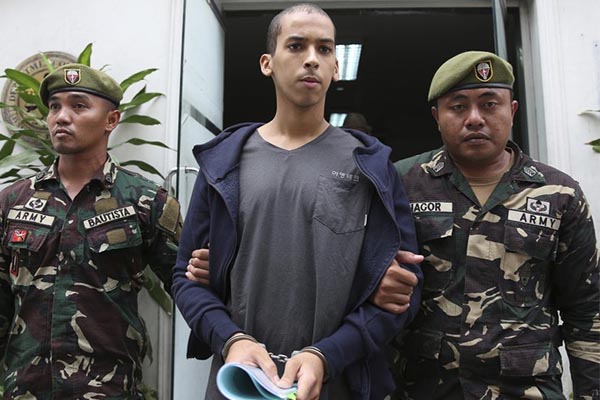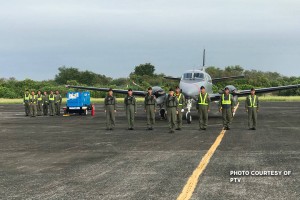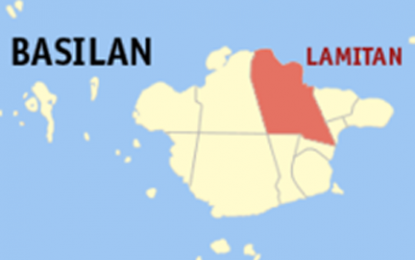From MindaNews (Jan 30):
PEACETALK: Addressing Violent extremism within the Southeast Asian context (By Yusuf Morales)
This discussion note describes the phenomenon of Violent extremism and its impact on Southeast Asia, as well as how the process of Islamization in southeast Asia happens. Using the paradigm of how the context of Islamization of the Southeast Asian, the author uses this paradigm as the operating mechanism on how Southeast Asian countries can battle Violent Extremism and Terrorism in their respective countries.
Discussion paper presented at the Putrajaya International Security Dialogue 2018 last January 5, 2017 at Marriot Hotel Putrajaya. Activity was organized by the Ministry of Home Affairs, Malaysia and the Muslim World League.
Introduction:
When one may glance at the significance of southeast asia, it appears to be the main crossroads of west and the east from both a cultural and an economic persepective. And to look at it as the new virtual melting pot of the world where the west seamlessly blends in with the east, with all of its positive and negative traits intertwined.
Even in the context of violent extremism and terrorism, it seems that it has arrived on our doorstep and that it needs contextualization as to how a response would be done in the mind of the southeast Asian.
Nature of Southeast Asian Culture
The clear distinctive mark of southeast Asian culture is its plurality. This is manifested through its cultural diversity. Of the six thousand languages spoken in the world today, an estimated thousand are found in Southeast Asia. Archeological evidence dates human habitation of Southeast Asia to around a million years ago, but migration into the region also has a long history
[1].
It is important to note that both in peninsular and insular Southeast Asia, different cultural imprints have been seen, among them notable was the Hindu and Buddhist influences which has remained to this day even in Indonesia and Malaysia, brought by the Sri Vishaya and Madjapahit empires respectively. While insular Southeast Asia (Brunei-Indonesia-Malaysia-Philippines) is no longer predominantly Hindu or Buddhist, but its cultural influences remain in our respective countries.
Islamization of Southeast Asia
The Islamization of Southeast Asia has been brought through several contexts and constructs. Initially, Arab traders and sailors regularly visited the ports of Southeast Asia long before they converted to Islam. At first glance the region was little more than a middle ground, where the ships coming from the different trade routes docked at the intersection of Southeast Asia from which by the 7th and 8th centuries A.D., sailors and ships from areas within Southeast Asia – particularly Sumatra and Malaya – had become active in the maritime trade of the region. Southeast Asian products, especially luxury items, such as aromatic woods from the rainforests of Borneo and Sumatra, and spices, such as cloves, nutmeg, and mace from the far end of the Indonesian archipelago, had also become important exports to both the Asian mainland such as China and India and the Mediterranean states whether Africa, Turkey or the European states. Eventually these trading links were to prove instrumental to the expansion of Islam in Southeast Asia than they had earlier been to the spread of Buddhism and Hinduism
[2].
The conversion followed several patterns:
First, honest Muslim and Arab merchants gained respect among the local traders and in the process of assimilation of trade relations enabled the locals to embrace Islam and gain access to other parts of the modern mercantile world at that time. The second was when these mercantile ships carried Sufi missionaries who carried the deeper and more intricate expressions of Islam towards Southeast Asia and as these visits became more frequent, more conversions happened of which both the traditional Pre-Islamic customs and the Islamic practices were assimilated and indigenized forming a healthy fusion wherein local customs that were not clearly against Islam were allowed to exist at the same time reinforcing a more tolerant and more multicultural expression of Islam. Some of the kingdoms in Southeast Asia may have preferred to remain non-Muslim but have continued to have healthy trade relations with their Muslim neighbors
[3].
As the Muslims continued to gain numbers, strength and influence, these Muslim communities managed to generate and create centers of knowledge that were said to be equal if not better than the Arab centers of learning, to the point that in one epoch of history Aceh was said to be the “porch of Makkah” due to the number of Muslim scholars who settled there and elsewhere in Southeast Asia creating voluminous works of Islamic scholasticism. In effect creating their own indigenous yet authentic expression of Islam.
This expression of Islam manifests as an orthodox representation of Islam at the same time not losing its distinct indigenous character of Southeast Asian Islam.
Extremism as an attempt to be the new counter-narrative
There are several contexts to understand why extremism or violent extremism is the current attempts to be the counter-narrative that aims to supplant the moderates and the traditional culture in Muslim countries.
There are two constructs we need to understand:
First is the battle between moderates and extremists, and second is the battle between indigenization and Arabization of Islam in Southeast Asia.
Moderates, believe that a balance can be struck between cultural traditions of Southeast Asians without compromising the depth of spirituality that it has enjoyed through the centuries, while extremists believe that culture must be disrobed from the Southeast Asians’ mind, in order that a pristine understanding of Islam can be achieved. Moderates believe that Islam can localize, indigenize and contextualize to achieve a religious and cultural balance, while extremists believe that there can be no quarter given and that culture must be eliminated and that a total shift to all things Arab must be attained.
Given these constructs, extremists aim to pull down our existing systems while the moderates want a clear balance of both state, faith, culture and life.
But what we forget is that Islam has already indigenized and adapted itself to Southeast Asia and has taken a new life of its own, being in one of the largest areas where Muslims live outside of the Middle East and creating its own cultural and philosophical expression.
To counter this our experiences and basic theological constructs by our Ulama can be used as a basis to combat and counter violent extremism and terrorism.
How do we respond to Violent extremism in the Southeast Asian Context?
To efficiently address the construct of violent extremism and terrorism in the Southeast Asian context, we may need to address it through three main areas:
- Theology – the theology must not only be inclusive but respectful of religious differences within the Islamic tradition as well as other religions. Any Islamic interpretation that views differences of opinion as heresy and should be dealt with violence should not be accommodated as this will run to the anathema of an inclusive and multicultural society.
- Localization of Islam and culture – one of the core tenets of Islam is its ability to localize and translate into the native discourse. This has been the strength of indigenized and localized Islam. The more indigenous and localized Islam has become, the stronger it is to resist violent extremism. There must be a strong move for indigenization vs Arabization.
- Acknowledging Islam and multiculturalism in our own countries. Indigenous Islam has proven the success of multiculturalism and cultural pluralism in Southeast Asia. This is the strongest mechanism we can assimilate to counter Violent extremist and intolerant beliefs.
Theological positioning on PCVE
To be able to effectively address the ideological and the narrative components of Violent extremism it is important to realize that the Muslim scholars have been making clear cut theological positions against Violent extremism. It is noteworthy to mention these as part of a whole of nation approach as well as whole of region approach to countering violent extremism. As a policy we suggest that educational and cultural institutions should ensure the inclusion of the following foundational documents to be emphasized, taught and practiced at different levels in Muslim communities
[4]:
- A Common Word[5], an interfaith document signed by Muslim scholars highlighting the acceptance of the two commandments to be present in Islam and Christianity, “Loving God” and “Loving neighbor”. This is important so that Muslims would openly welcome the concept of respect for non-Muslims and respect for Christians.
- Amman Message[6] -This is a document signed by different Muslim scholars recognizing the many schools of thought in Islam as well as recognizing that diversity of understanding in Islam, that it recognizes and respects all Muslims regardless of school of thought, respect and jurisprudence. This document clarifies that Muslims should not shed blood of fellow Muslims on the basis of differences of belief and are required to respect them.
- Letter to Baghdadi[7]. This letter was signed by Muslim scholars explaining why DAESH/ISIS is misguided and what the theological and textual references are to prove that DAESH is un-Islamic.
- Marrakesh Declaration[8] C:\Users\asus\Documents\dabiq magazin\www.marrakeshdeclaration.org\. is a declaration of Muslim scholars on how non-Muslim minorities are to be treated. This document was signed as a response to the abuses done by DAESH against non-Muslim minorities and is a guide to Muslims on how to engage with non-Muslims when they are the majority.
- Charter of Madina or also known as the Madina Constitution[9], a theological document of the first government of Muslims in Madina which clearly defined community and Muslim to non-Muslim relationships from a communal to state level.
To exclude these documents in the ideological discourse means there is a serious attempt to avoid addressing the ideological roots of extremism.
Addressing Indigenization and localization of Islam.
Each of the Southeast Asian countries, especially Malaysia, Indonesia, Brunei and the Philippines has had its own understanding and contextualization of how Islam is lived in each of these countries. The idea that Islam forms part and parcel indivisible from the national character of these nations is one way of grabbing the narrative and discourse of Violent extremists and terrorists that Islam is edged away and pushed away from the national discourse.
Indigenization and knowledge generation are essential elements that ensure that Muslims in Southeast Asia are stepped and balanced in moderation and multiculturality of their peoples.
Inclusion as part of the National identity
It is important to highlight that one should not exist without the other, meaning the recognition that Islam forms one of the important identities of southeast Asians in their countries but also that each country is clearly multicultural and multi-religious. An active recognition of this is in the context of their individual national ideologies, Pancasila, Salam Satu Malaysia, Pagmamalasakit at pagbabago (Change and concern) and other countries.
Using these three elements we find both moderation and balance in our respective countries and can serve as the functioning mechanism to counter violent extremism and terrorism.
(MindaViews is the opinion section of MindaNews. PeaceTalk is open to anyone who wishes to share his/her views on peace in Mindanao. Prof. Yusof Roque Morales is currently Commissioner representing Muslim Minorities (Sama Tribe) at the National Commission on Muslim Filipinos and a member of the Board of Advisers of Al-Qalam Institute for Muslim Identities, Ateneo de Davao University. He is also a Consultant for Muslim and IP concerns of the Social Development Council, Ateneo De Zamboanga University and adviser to the Indigenous Peoples Council of Leaders of Zamboanga city and of Salaam Ateneo de Manila University. He is currently a visiting lecture in several service academies and schools in the uniformed services of the Philippines)
Bibliography:
Theological documents and declarations:
A Common word
Amman Message
Charter of Madina
Letter to Baghdadi
Marrakesh Declaration
Online Articles:
Peacetalk: Addressing religious violent extremism from an ideological framework some thoughts for consideration. Mindanews
http://www.mindanews.com/mindaviews/2017/06/peacetalk-addressing-religious-violent-extremism-from-an-ideological-framework-some-thoughts-for-consideration1/ accessed 23 December 2017
[1] http://asiasociety.org/education/
introduction-southeast-asia accessed dec 23, 2017
[2] http://history-world.org/islam7.htm accessed 23 Dec 2017
[3] ibid
[4] http://www.mindanews.com/mindaviews/2017/06/peacetalk-addressing-religious-violent-extremism-from-an-ideological-framework-some-thoughts-for-consideration1/ accessed 23 December 2017
[5] www.acommonword.com
[6] www.ammanmessage.com
[7] www.lettertobaghdadi.com
[8] www.marrakeshdeclaration.org
[9] www.constitution.org/cons/medina/macharter.htm
http://www.mindanews.com/mindaviews/2018/01/peacetalk-addressing-violent-extremism-within-the-southeast-asian-context/








